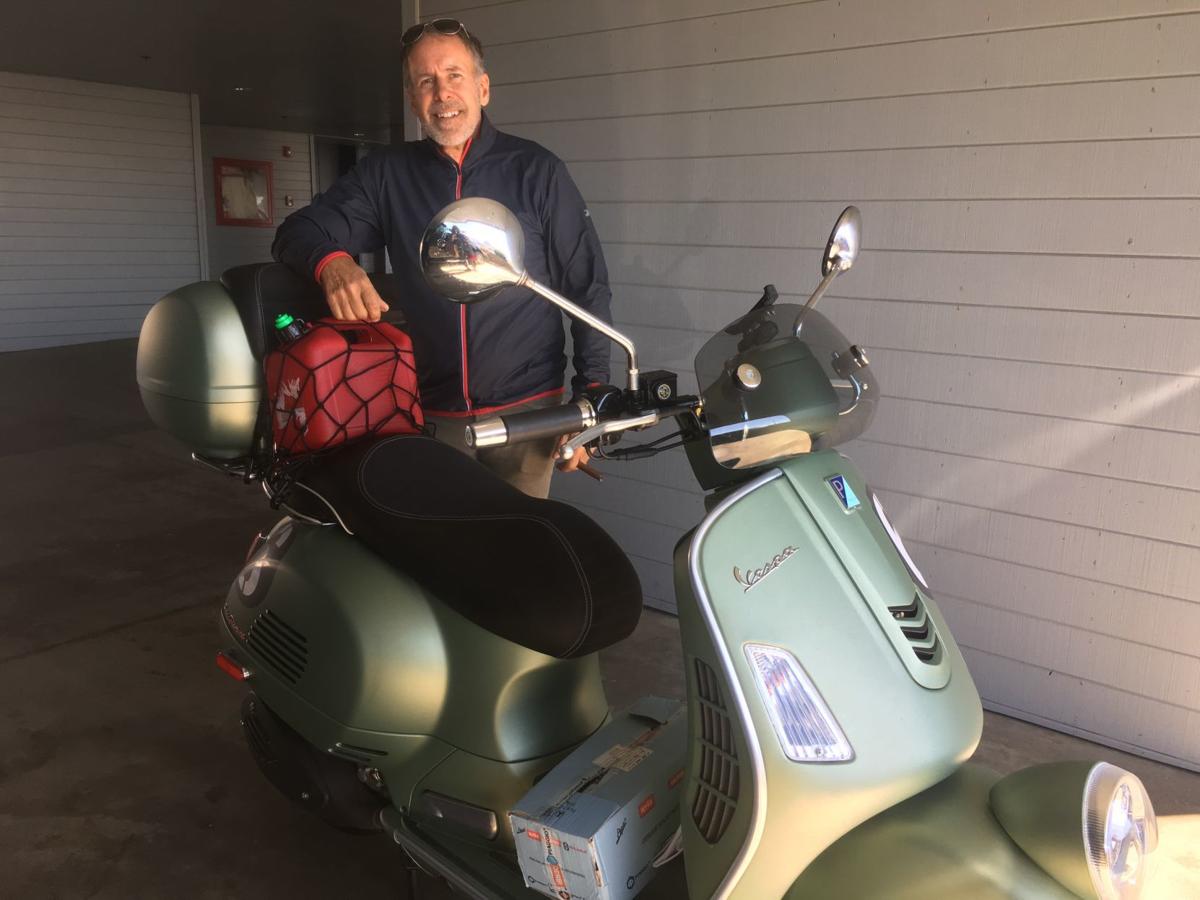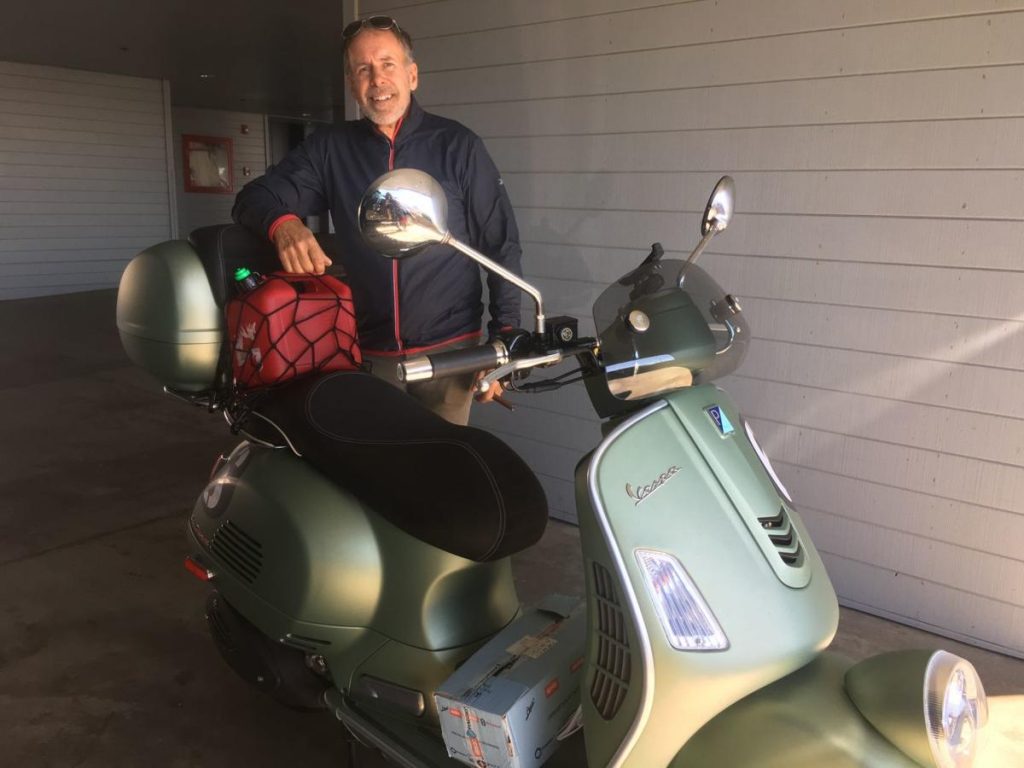A lot of people have returned to these North Carolina mountains after going away to the big city then coming back to the High Country to find a way to make a living here. While the sights, sounds, diverse culture and economic opportunities of this country’s larger urban areas is intriguing, exciting and rewarding; more times than not, you may find yourself sitting in a traffic jam daydreaming about the mountains more than vice versa.
Jazz trumpeter Shane Chalke has been performing here every summer and fall for years with his B.E. (Banner Elk) Jazz Band and occasionally with the Boone-based jazz ensemble Swing Set. During the winter months, Chalke migrates to the surprisingly jazz-centric city of Sarasota, Fla., where he performs at numerous clubs and venues. When springtime arrives, however, the beauty and groove of the mountains sends him north.
Chalke’s love of our Blue Ridge Mountains was enhanced recently when he embarked on a competitive road trip from California to Virginia Beach.
Chalke is a retired mathematician who was formerly based in Northern Virginia before he found the High Country by accident after a meandering motorcycle trip. An acclaimed musician as well, he moved to this area and soon began his summer and fall music residency at the Chef’s Table at Sorrento’s, located in the heart of nearby Banner Elk. The weekly Wednesday evening concert lasts from 7 to 10 p.m. and features a wide array of jazz that falls on the traditional, exploratory side of the genre.
This year, before Chalke returned to Western North Carolina, he decided to participate in the adventurous Scooter Cannonball Run race. Lasting for 10 days from May 26 until June 4, the 3,900-mile event is officially described as “a coast to coast endurance challenge for scooters held every two years since 2004. This event is a test of both rider and machine that takes in some of the best motorcycle roads on the North American continent. The Cannonball Run is a time/distance/regularity rally where points are awarded based on miles completed and the ability to maintain the standard pace.”
Scooter Cannonball Run began in Morro Bay, Calif., and ended in Virginia Beach, Va. Along the way, the obligatory check points for the race were purposely located in the middle of nowhere, which required the participants to travel some of America’s most beautiful and desolate back roads.
Chalke decided to do this feat on a whim, although it took some effort just to get to the starting line.
“Back in January, a friend of mine from high school sent me a link to the Scooter Run and said, ‘Hey, this is kind of a weird and crazy thing,’” said Chalke. “I opened up the webpage and looked at it and about seven minutes later I signed up for it. I thought that this was too unusual a thing to not try and do. I use a scooter for my general transportation down in Sarasota. I don’t even have a car there. So, I already had a Vespa and it was suitable for the race. I hired a shipping company to transport my Vespa to California, but they failed me. I wanted my scooter to get out there by May 22, but by the time I get out there on the 24th there was no scooter and the race was starting two days later. I’m arguing with the shipping company, who said they couldn’t get the scooter to me, but they told me it was in their warehouse in Las Vegas. So, I hopped on a flight from San Francisco to Las Vegas and I got there at night, rented a U-Haul truck and went to their warehouse and begged them to find my scooter. I put it in the U-Haul and drove it 500 miles to Morro Bay, Calif., where the race started.”
While a nice jaunt on a scooter sounds pleasant, the Scooter Cannonball Run’s isolated checkpoints meant 400 miles of riding a day on rough back roads and more. Still, the route found the racers going through beautiful parts of the United States such as Death Valley, California, the red rock of Bluff, Utah, the famous Four Corners region, southern Colorado, Oklahoma, Texas and Arkansas, and then the home stretch of Mississippi, Alabama, Georgia, North Carolina and Virginia.
The race just happened to go past the Blue Ridge Parkway and Grandfather Mountain, and when Chalke saw the exit to his own house in Banner Elk, he cut his race short as he was mentally and physically worn out after nine days. Only 15 riders completed the whole race.
Still, Chalke did achieve an impressive 3,600-mile run and saw wonderful country along the way. But, what the adventure did leave him with was a greater love for the High Country.
“What was amazing to me was that you can drive all of the way across America and only have one day of flat riding,” said Chalke. “There was a road that we traveled in Utah called the Burr Trail, which is a Bureau of Land Management road, and it is 70 miles long and winds down into the canyons and switchbacks like you would see in Ecuador or something. As a working musician used to late hours, I was leaving at 9 a.m. in the morning while the other riders were leaving at 5:30 a.m. in the morning. So, I’m riding by myself on the Burr Trail in the middle of nowhere and rain storms started coming in. If I had fallen off there, they wouldn’t have found me for days. Riding through Zion National Park was a highlight as was Bryce Canyon. It was like being on Mars.”
Soon, however, the terrain began to change.
“I was driving through all of this dry dirt and mountains, but it started to get green again when I hit the Ozark Mountains in Oklahoma and I thought, ‘Man, I’m almost home,’” said Chalke. “I like trees. I like leaves. Some people are drawn to the west, but I like the mountains here. There is nothing like it. You learn a lot about yourself spending all of that time on a scooter as you have a lot of time to think. The most important thing that I learned is that I live in the right place. You see a lot of this country and a lot of it is spectacular, but you get home and say, ‘I’m in the best place.’”


